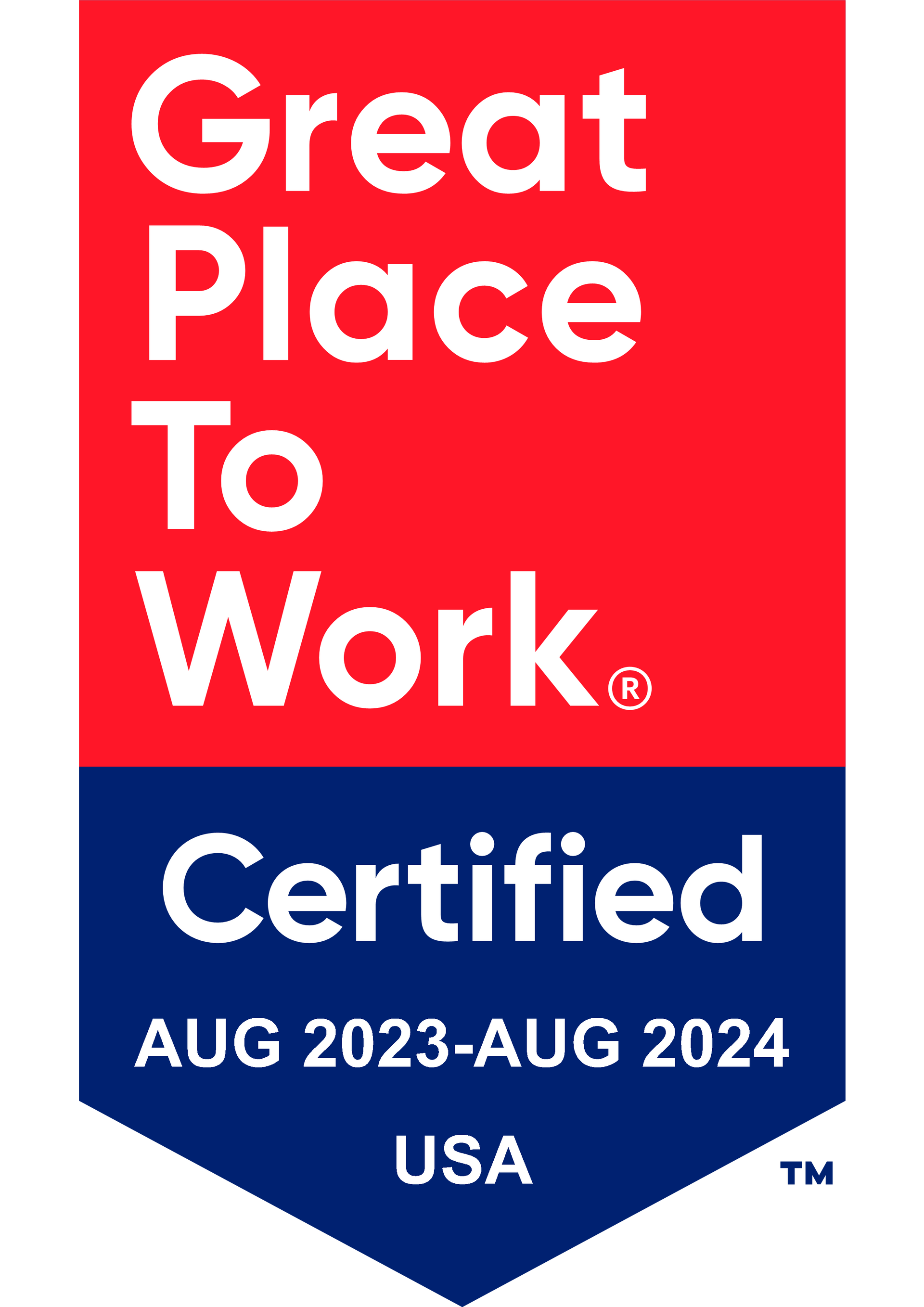Get in touch
408-366-8880
mymail@mailservice.com

Small Business Benefits Package Options

In today’s market, employees would often select a job with a lower base salary for a job with a better benefits package. A 2020 Employee Benefits study by Fractl asked respondents how heavily they would weigh a list of 17 benefits when deciding between a lower-paying job with more benefits and a higher-paying job with fewer benefits. Health, dental, and visions insurance ranked as the most important benefit, with 88% of respondents indicating they would give these benefits heavy consideration (54%) or some consideration (34%) when reviewing a job offer. The next three highest-ranking items on the list included flexible work hours, more vacation time, and work-from-home options.
A Glassdoor Employment Confidence Survey showed that close to 4 in 5 (79%) employees wanted new or additional benefits over a pay increase, and a 2017 study published in the American Economic Review regarding alternative work arrangements found that individuals would take an 8% pay cut to work for an organization that offered flexible work schedules.
Statistics like these indicate the importance of offering benefits, above and beyond base salary, to employees. For small businesses, a benefits package to attract and retain talent should include some form of the following:
- Health Insurance, including medical, dental, vision, and a health spending account (HSA)
- Life Insurance
- Disability Insurance
- Mental Health Benefits
- Retirement Benefits, e.g., 401(k)
- Paid Time Off (PTO)
- Flexible Working Arrangements
HEALTH INSURANCE
According to the Society for Human Resource Management (SHRM), health-related benefits have consistently been the top-rated most important benefit by employees. Whether new to the workforce as a Generation Z employee or nearing retirement as a Baby Boomer or Generation X employee, health benefits matter. Medical, dental, and vision insurance fall under the category of health-related benefits.
In today’s post-COVID recovery period, health benefits are no longer a nice-to-offer benefit but a requirement to remain competitive. In SHRM’s 2021 Annual Employee Benefits Survey, many organizations expanded their supplemental health benefits, including critical illness, hospital indemnity, intensive care, and long-term care insurance, while maintaining their health plan offerings. According to the survey, the most commonly offered health plans were:
- Preferred Provider Organization (PPO) Plans—79%
- High-Deductible Health Plans (HDHPs) with Health Savings Accounts (HSAs)—62%
- Health Maintenance Organization (HMOs) Plans—31%
- HDHPs without HSAs—16%
- Point of Service (POS) Plans—16%

HEALTH SPENDING ACCOUNTS
Medical Flexible Spending Account offerings that accompany most health-insurance plans (with the exception of HDHPs that are typically accompanied by an HSA) remained relatively steady, with only a 2% decline between 2019 and 2020. Employer contributions to HSAs held relatively steady from 2019 to 2020, as well.
An option for small businesses that might not be able to afford a typical health plan is to offer a Health Reimbursement Account (HRA) to employees. An HRA operates similarly to an HSA, though it is solely employer-funded, whereas an HSA is employee-funded and can also be employer-funded. According to the SHRM report, 17% of employers offered an HRA, which is a tax-advantaged health benefit for reimbursement of allowable out-of-pocket expenses and medical premiums.
Employers can choose how much they offer to employees annually through an HRA. The different IRS-approved HRAs available include the Dental or Vision HRA, Excepted Benefit HRA, Group Coverage HRA, Individual Coverage HRA (ICHRA), Qualified Small Employer HRS (QSEHRA), and Retiree Health Reimbursement Arrangement (RHRA).
DENTAL AND VISION INSURANCE
Dental and vision insurance aren’t the most exciting insurances to offer, though they are standard aspects of most employer benefits packages, with 95% of employers offering dental insurance in 2020, and 92% offering vision insurance per SHRM. Both types of insurance are relatively low-cost for both the employer to offer and the employee to help pay for.
LIFE INSURANCE
Life insurance is particularly important to employees that have families. It provides peace of mind in the event of an unexpected death. Most employers offer up to a certain amount of Life Insurance as a standard financial benefit. Typically, the employee can purchase additional coverage at a relatively low cost.
DISABILITY INSURANCE
The two types of disability insurance offered by employers include short-term and long-term disability. Disability insurance pays an employee a percentage of their base pay for a specified period of time when they need to take an extended health-related leave. As such, it can provide peace of mind for employees.
Short-term disability typically lasts between three and six months, depending on how the plan is designed. Long-term disability continues to pay an employee for a period of two to ten years, or longer, depending on the plan.
Some businesses offer long-term and short-term disability insurance options at no charge to employees, including 71% and 62% in 2020, respectively. Others offer it as an elective benefit where the employee covers the cost, still making it possible for the employee to have to it.
RETIREMENT BENEFITS
The most common retirement benefit offered by more than 90% of employers is a 401k defined contribution plan. With a defined contribution plan, the employee can contribute up to the IRS limit per year, and employers can also contribute. Often, employers match up to a certain percentage of the employee contribution, and the employer match vests at some point in the future. Employers sometimes choose to contribute discretionary contributions to an employees’ 401(k) annually, even if the employee does not contribute to the plan.
PAID TIME OFF AND VACATION
Employees are speaking up and requesting more time off. Per SHRM, the three benefits that matter most to employees outside of insurance-related benefits are paid time off, flexible working arrangements, and parental leave. Many employers are now providing caregiving support, parental leave, and emergency leave. They are also offering additional paid holidays and mental health days.
Common and popular time-off benefits companies offer include:
- PTO
- Vacation
- Maternity Leave
- Caregiver Leave
- Personal Leave
- Parental Leave
- Bereavement Pay
- Volunteer Pay
- Personal Holidays
- Paid Holidays
- Emergency Leave
- Mental Health Days

FLEXIBLE AND REMOTE WORKING OPTIONS
In the 2019 FlexJobs annual survey, 30% of respondents reported leaving a job because they didn’t have the option for flexible work options. Sixteen percent noted they were currently looking for a new job because of a lack of flexibility. Further, 80% said they would be more loyal to their employer if they had flexible work options, with 52% stating they’d tried to negotiate flexible work arrangements.
Flexible working arrangements are a benefit that more than 80% of employers ranked as important and felt they could offer to employees. This is especially true post the pandemic, where employees are speaking up more and many experts agree that work models combining office and remote work are for good. Research from the 2020 Robert Half Salary Guide showed that 50% of employers offered telecommuting or flex schedules. Variations of flex schedules employers offer include:
- Compressed Workweeks (i.e., 4X10, 4X9, and ½ day Fridays, etc.)
- Flexible workday start and end times
- Hybrid Telecommuting (i.e., part-time in the office and part-time working from home)
- Remote Work (fully working from home)
MENTAL HEALTH BENEFITS
Considering anxiety disorder is the sixth-leading cause of disability worldwide, depression costs employers around $44 billion annually in lost productivity, and the notion these numbers and mental health challenges, in general, are expected to continually rise due to COVID, employers are turning to mental health benefits to better support their employees.
In addition to Employee Assistance Programs (EAP) that have an emotional mental health support component, organizations are providing more or direct access to mental health support. Telehealth sessions, in-house therapists, and contracting with local clinics are gaining traction as options offered by employers.
ADDITIONAL BENEFIT OPTIONS
Additional benefits and perks that many small businesses offer employees include:
- Professional development
- Tuition reimbursement
- Financial planning resources
- Fitness or wellness incentives
- Identify theft protection
- Childcare benefits
- Student loan repayment benefits
- Home office incentives for remote workers
TIPS TO CREATE A SMALL BUSINESS BENEFITS PACKAGE
There is no denying that attracting candidates and retaining employees is difficult without a competitive benefits package. Whether you’re launching your first small business benefits package or you’re revamping your current one, here are some tips to consider.
- Work with a benefits broker
- Determine your goals
- Determine your budget
- Request input from employees
- Conduct needs assessments
- Consider legal considerations for your state and city
- Make adjustments to your current plan or design a new plan
- Create a communications strategy
- Reevaluate before launch to make necessary changes
- Continually educate employees about their benefits—from the launch to open enrollment and throughout the year
- Launch quarterly or bi-annual assessments
ADVANTAGES OF WORKING WITH A BENEFITS BROKER FOR SMALL BUSINESSES
Researching employee benefits options takes time and can come with a fair amount of stress. You want to know that you’re purchasing the best insurance policy at the best price to support your business and employees. Fortunately, working with a reputable benefits broker can make all the difference.
The advantages of working with a benefits broker include:
- You’re saving resources, like time and money, spent on research.
- Your interests are priority.
- The selection process is simplified.
- You’re offering competitive employee benefits that fit your needs and budget.
- You’re meeting legal requirements.
- You’ll receive competitive pricing.
- You’re not in it alone.
- You’ll have a partner for the long term.
KBI has been serving small businesses for decades. We’re here to support you through the complex employee benefits identification process, so you can rest easy knowing you’ve made the best decision possible with a team of benefits experts by your side.
Services
Latest Thinking



